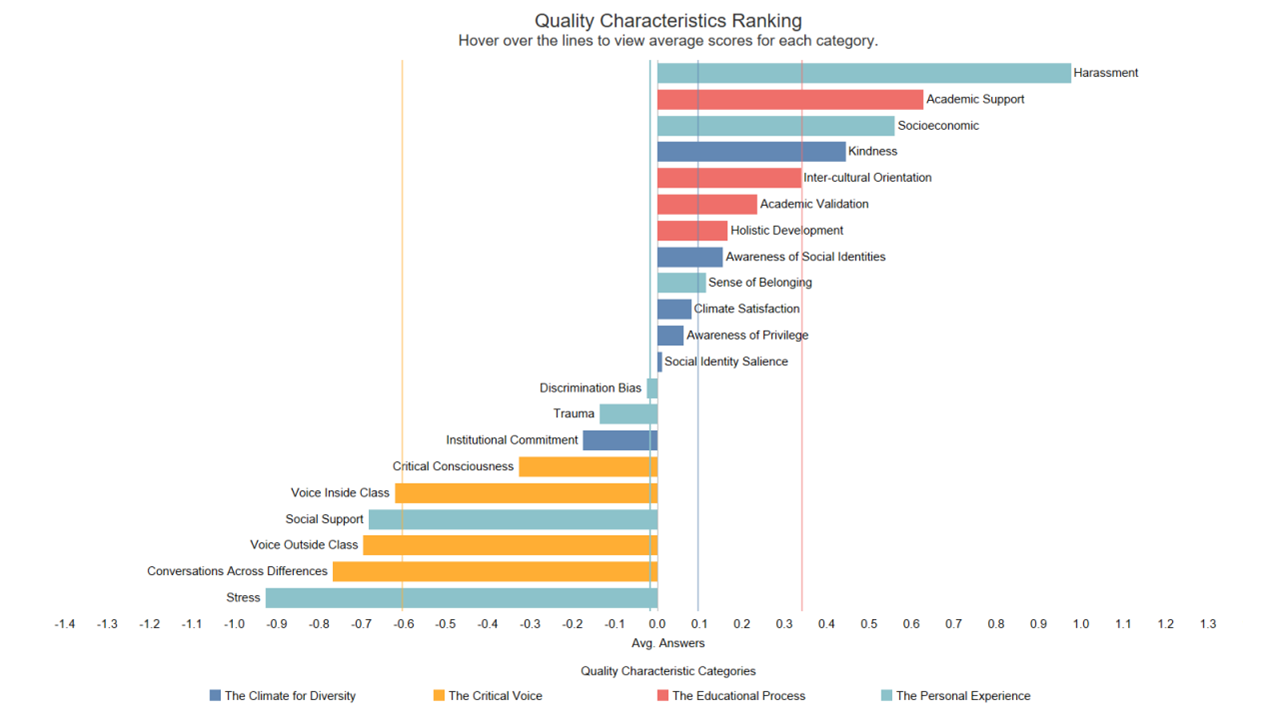Inclusivity Index Themes
Questions and Objectives
How do students describe the real qualities of the school, its climate and culture?
All quality scores above the favorable threshold
How do these perceptions and the nature of students’ experiences, vary by identity?
Year-over-year improvement in the priority qualities, those with scores that rank in the bottom 3 to 5
The Quality Assessment helps administrators understand which elements of the school’s culture and climate exceed, meet, and fall short of expectations. Each quality’s average score is indicated, and the qualities are color-coded according to 4 segments:
Climate for Diversity
Educational Process
Personal Experience
Critical Voice.
providing a higher-level look at the school’s strengths and weaknesses. The stratification defines opportunities to improve lower-performing qualities and schools typically focus on 3 to 5 qualities in each year, prioritizing the bottom of the chart. Schools find it instructive to relate these results to known strengths and weaknesses or historical areas of emphasis. They also compare their scores to the “All Schools Results” for added perspective into whether a school’s challenges are consistent with broader norms.
After choosing focus qualities, an “Assessment Tool” searches for the demographic subgroups with disproportionally negative scores for an individual quality. This analysis highlights 10 to 15 demographic subgroups that stand out for negatively scoring this quality. The tool shifts the threshold depending on the size of the demographic subgroup. An alternative graphic, “Individual Quality Score Range for Demographic Subgroup,” shows all the scores for a quality in one illustration segmented by any of the demographic categories.
Analysts also find it helpful to investigate the full profile of quality scores by selecting a demographic subgroup with a final tool, “Quality Characteristic Ranking Group Level Selection.” This portrays the complete Quality Characteristic Ranking for only students that fit in that subgroup.







